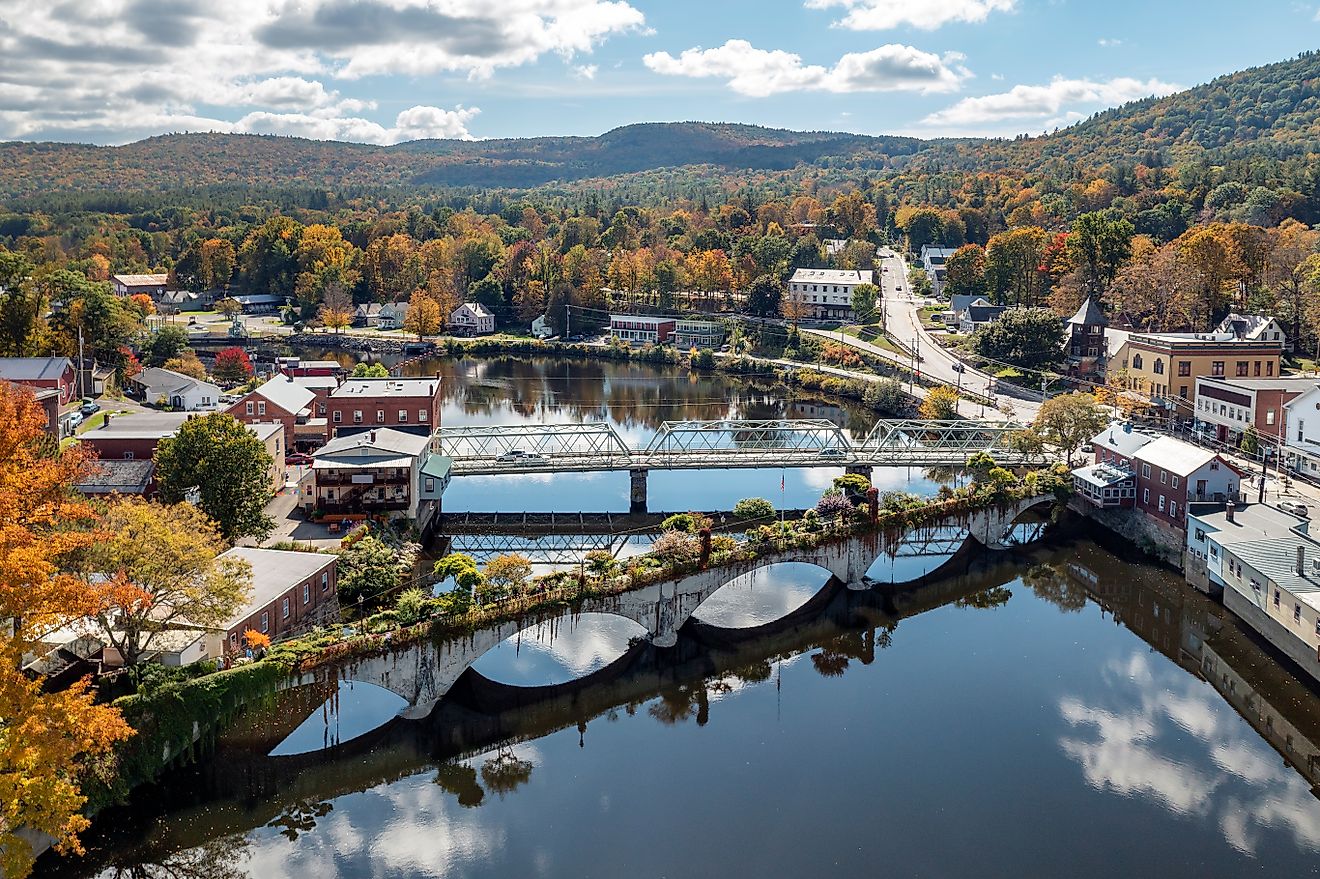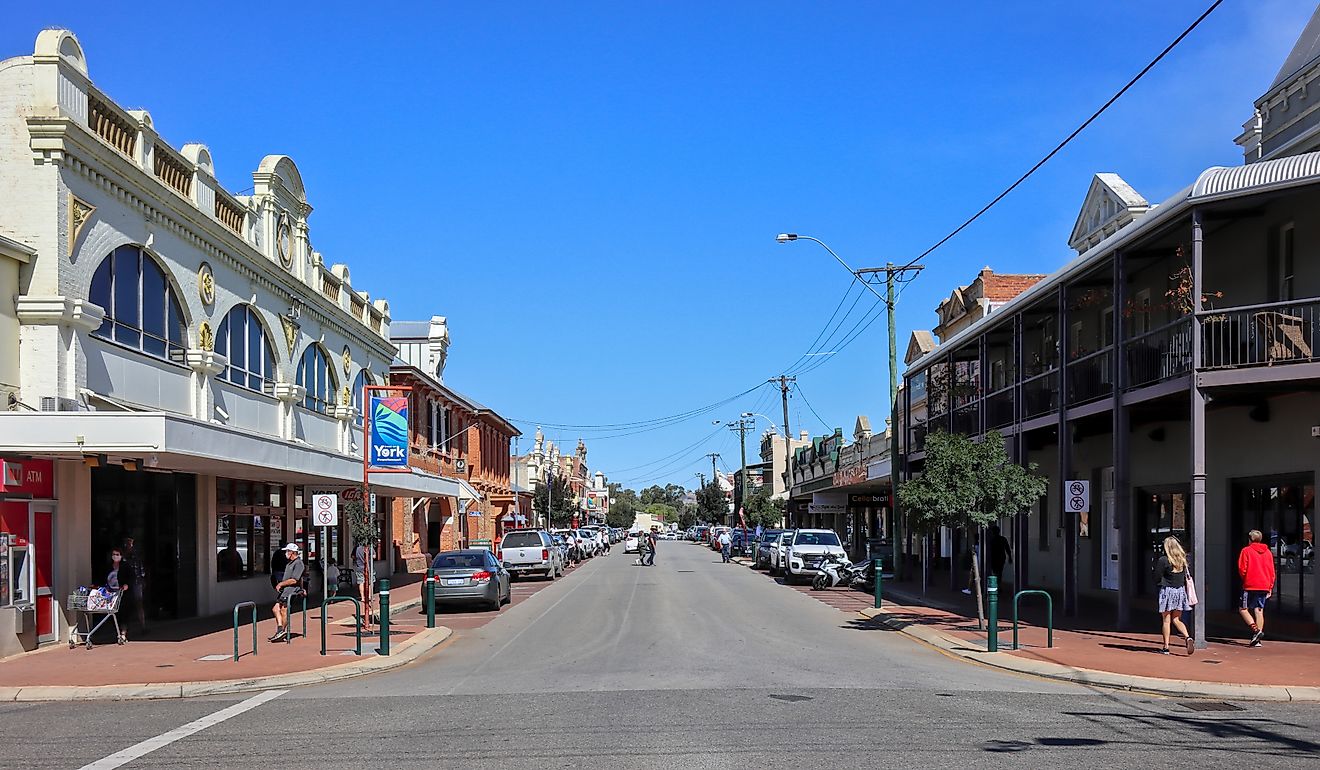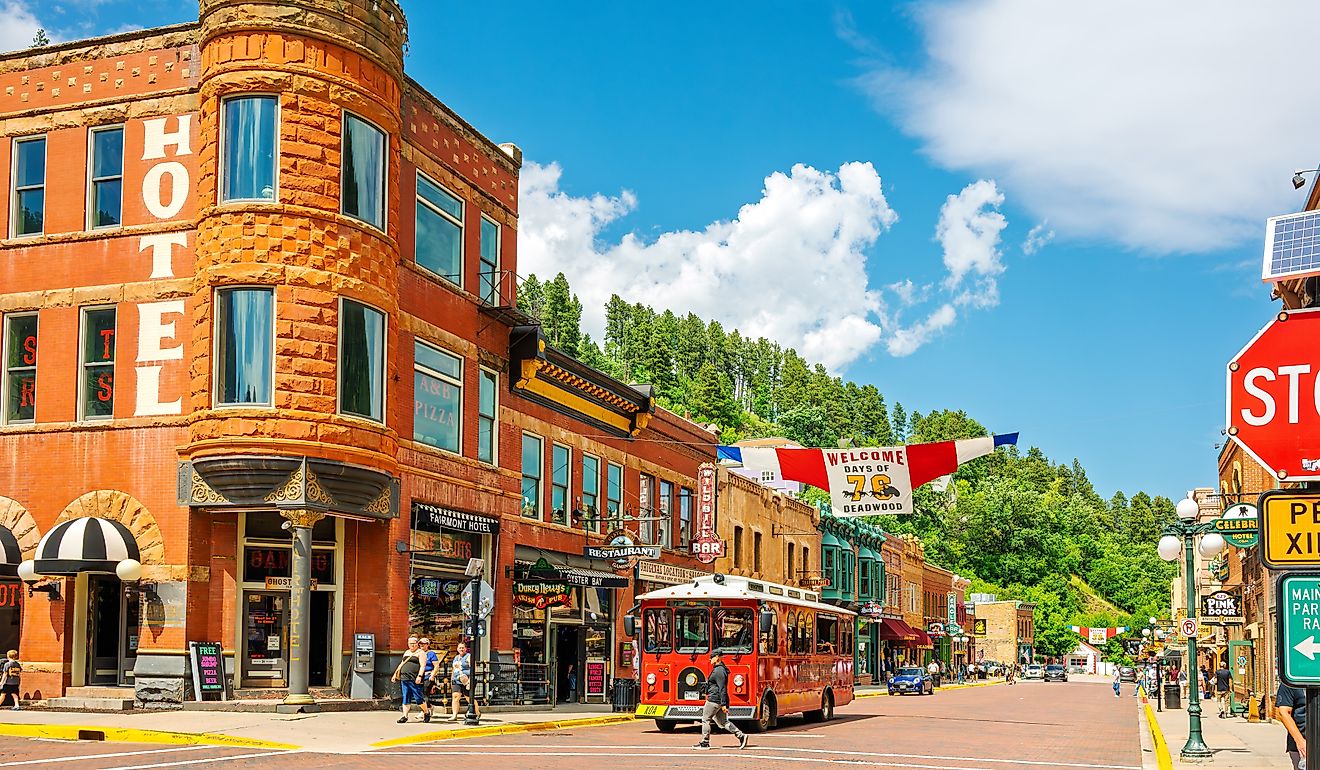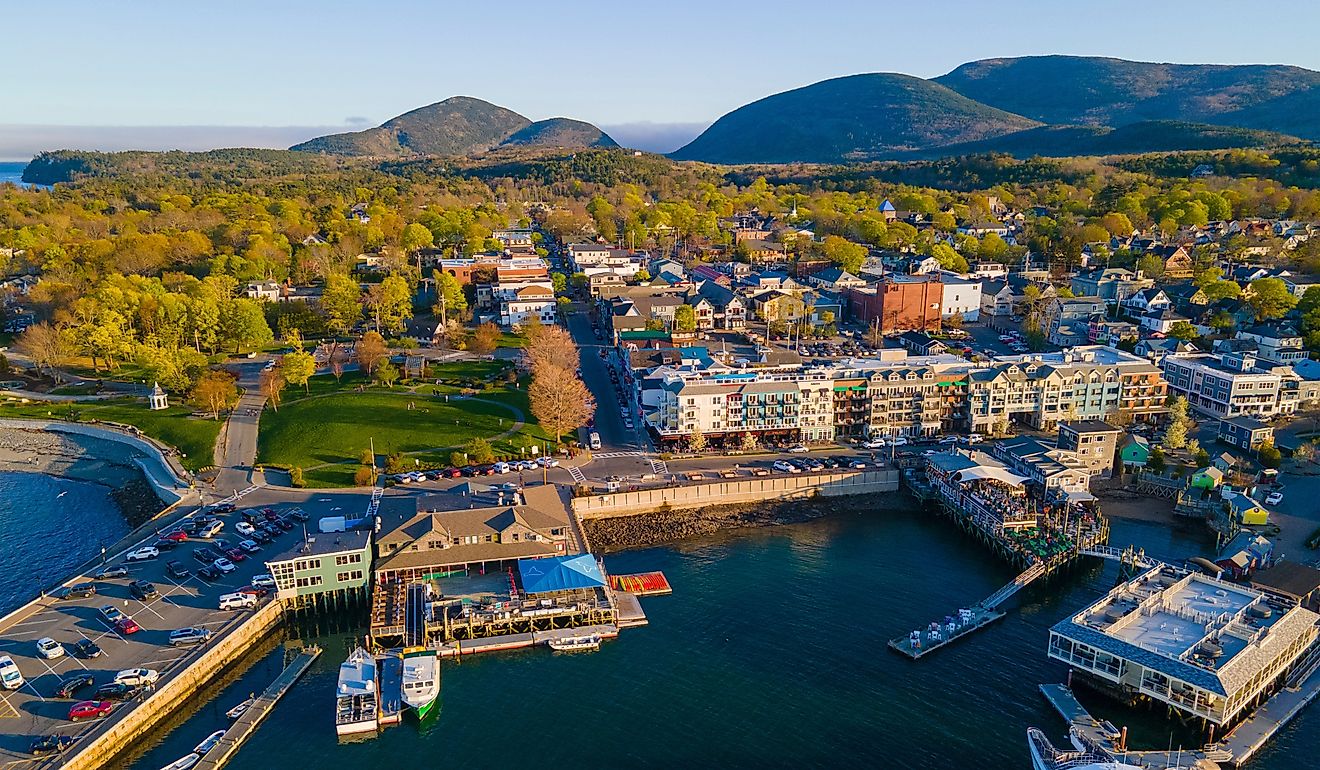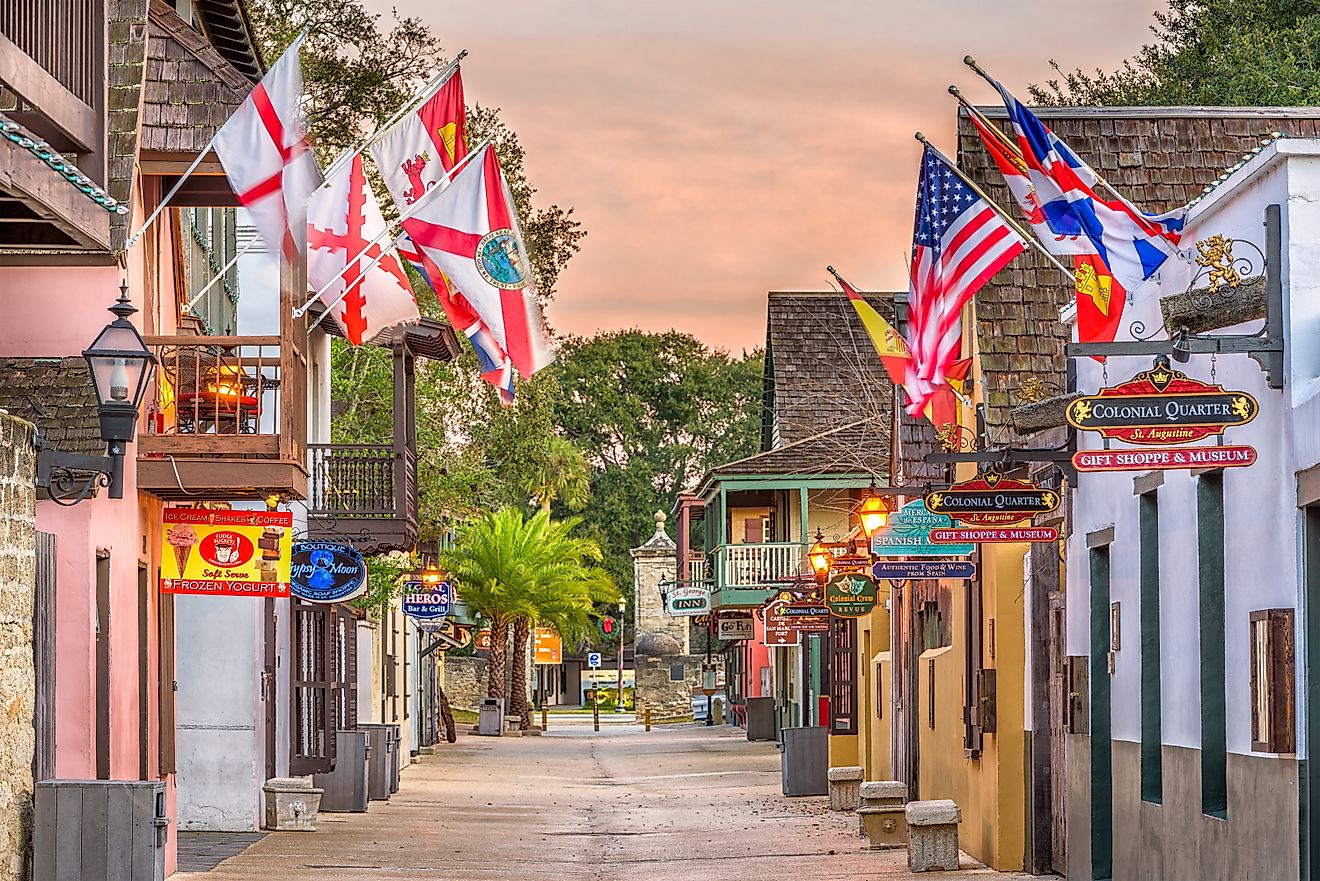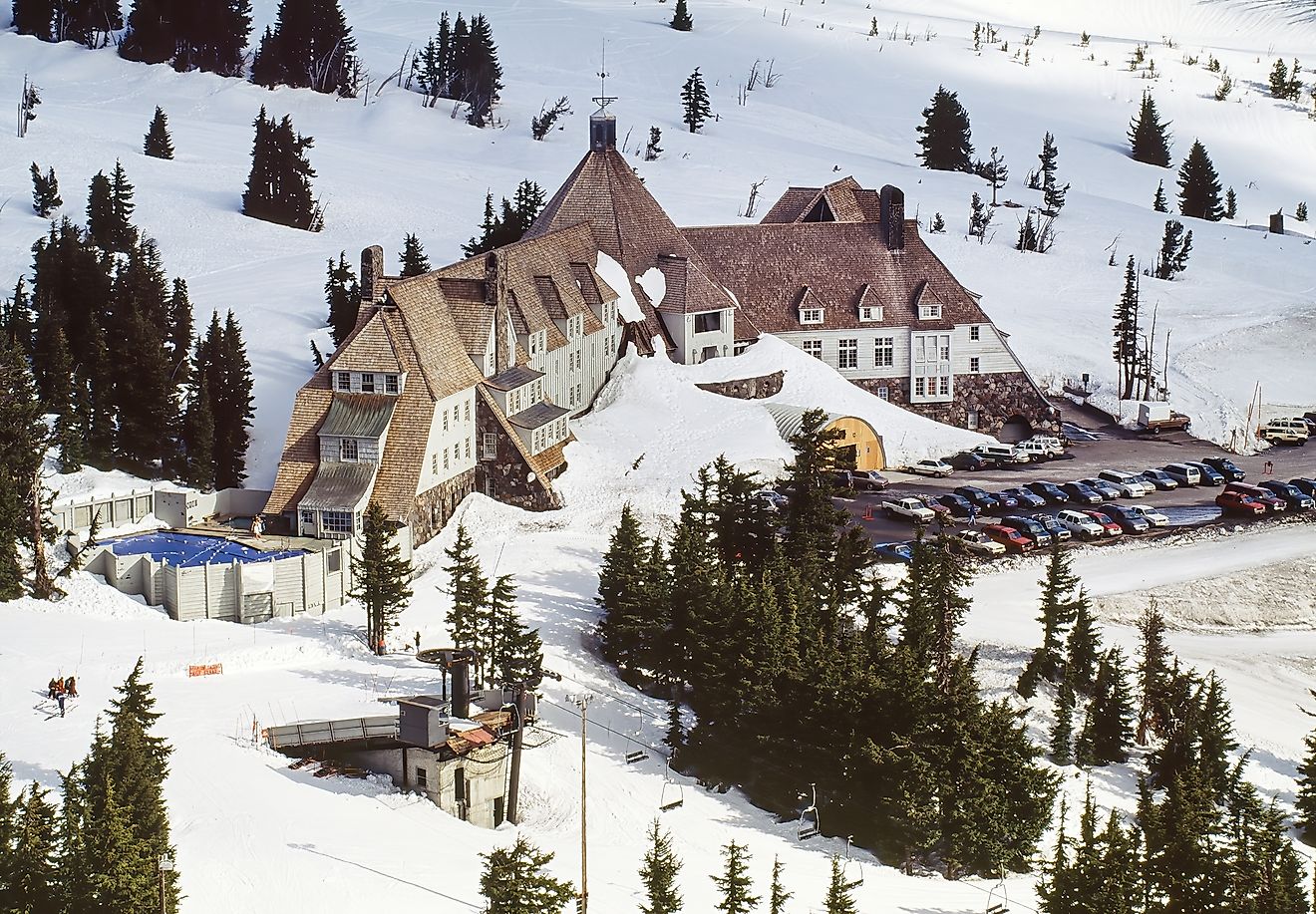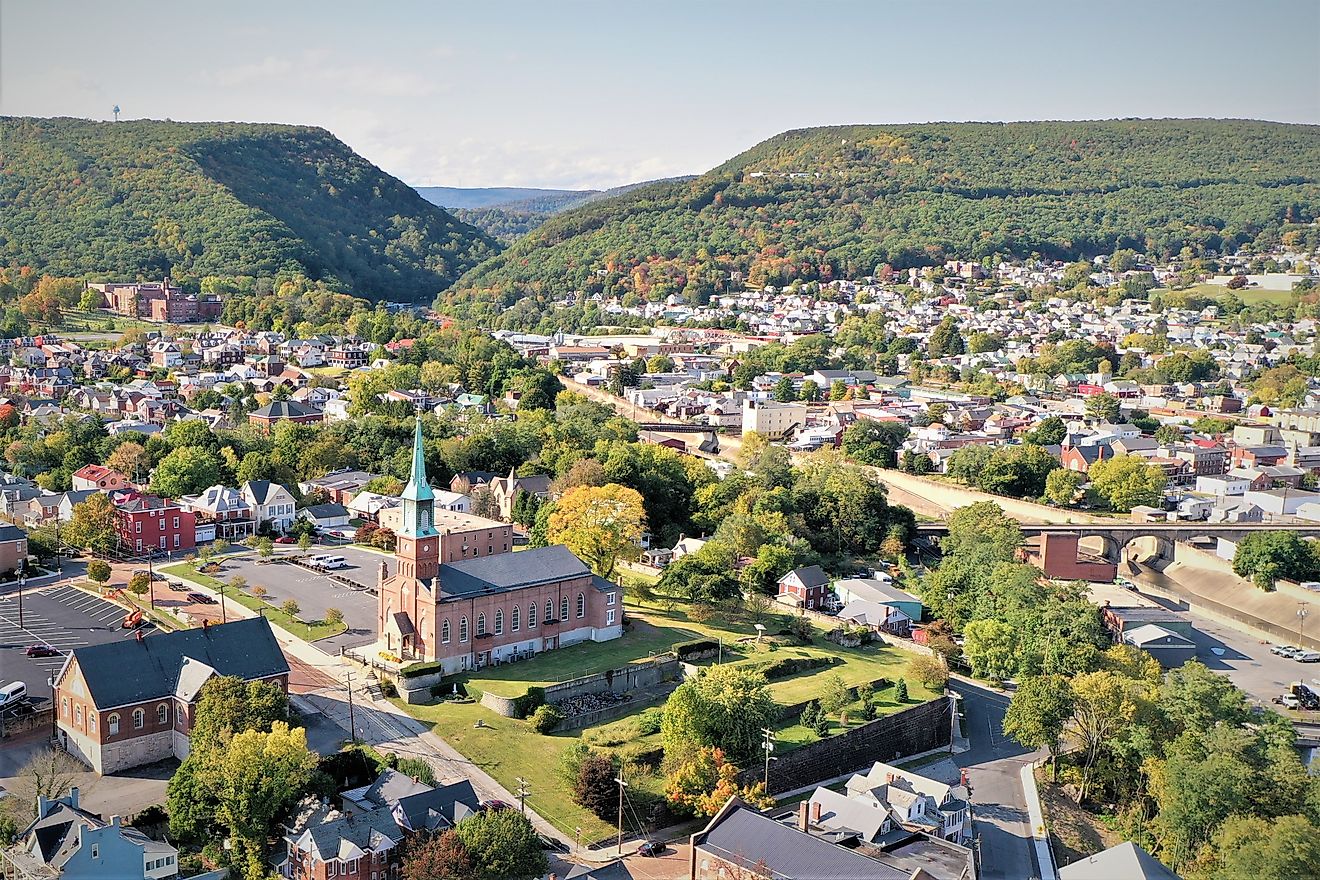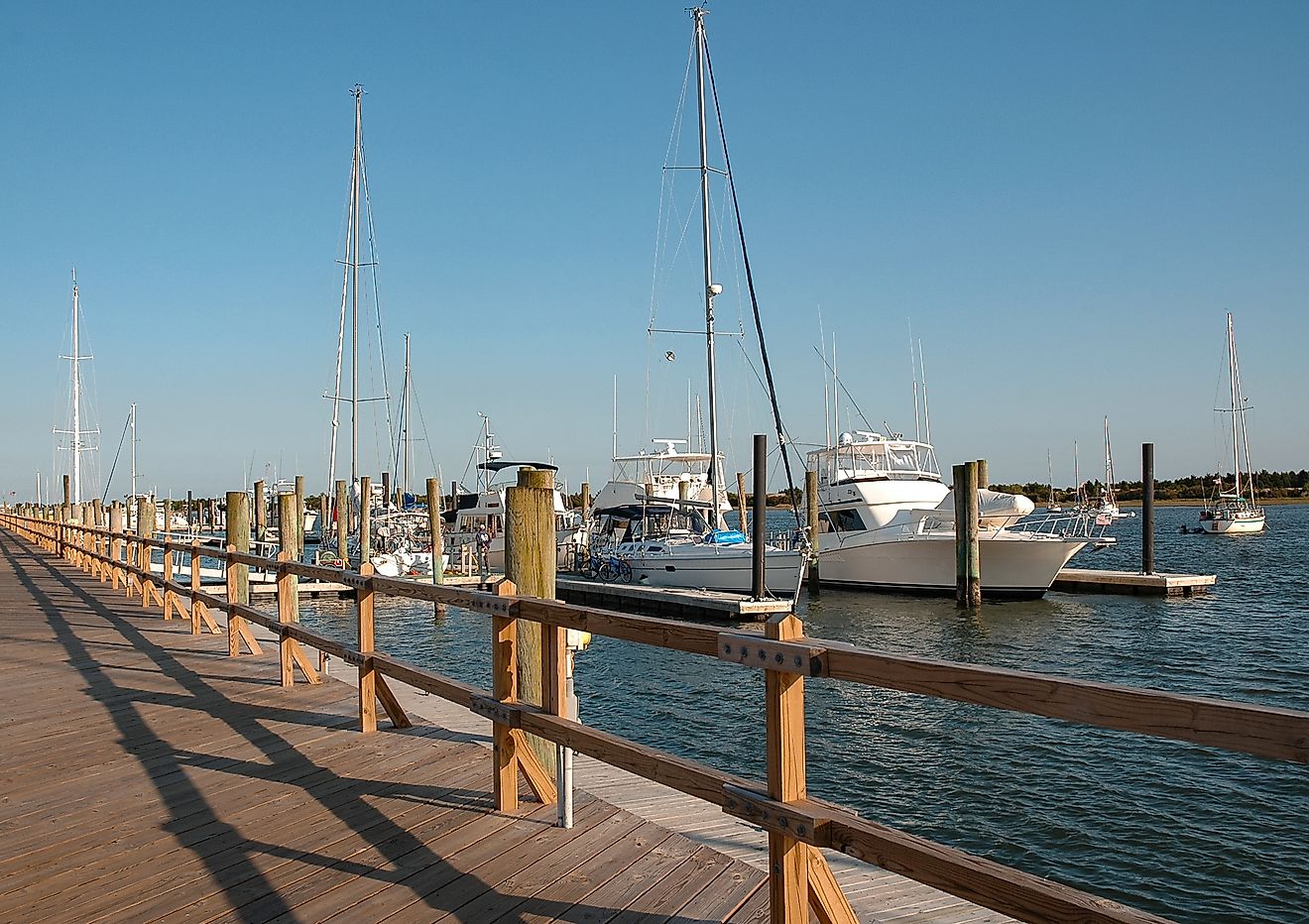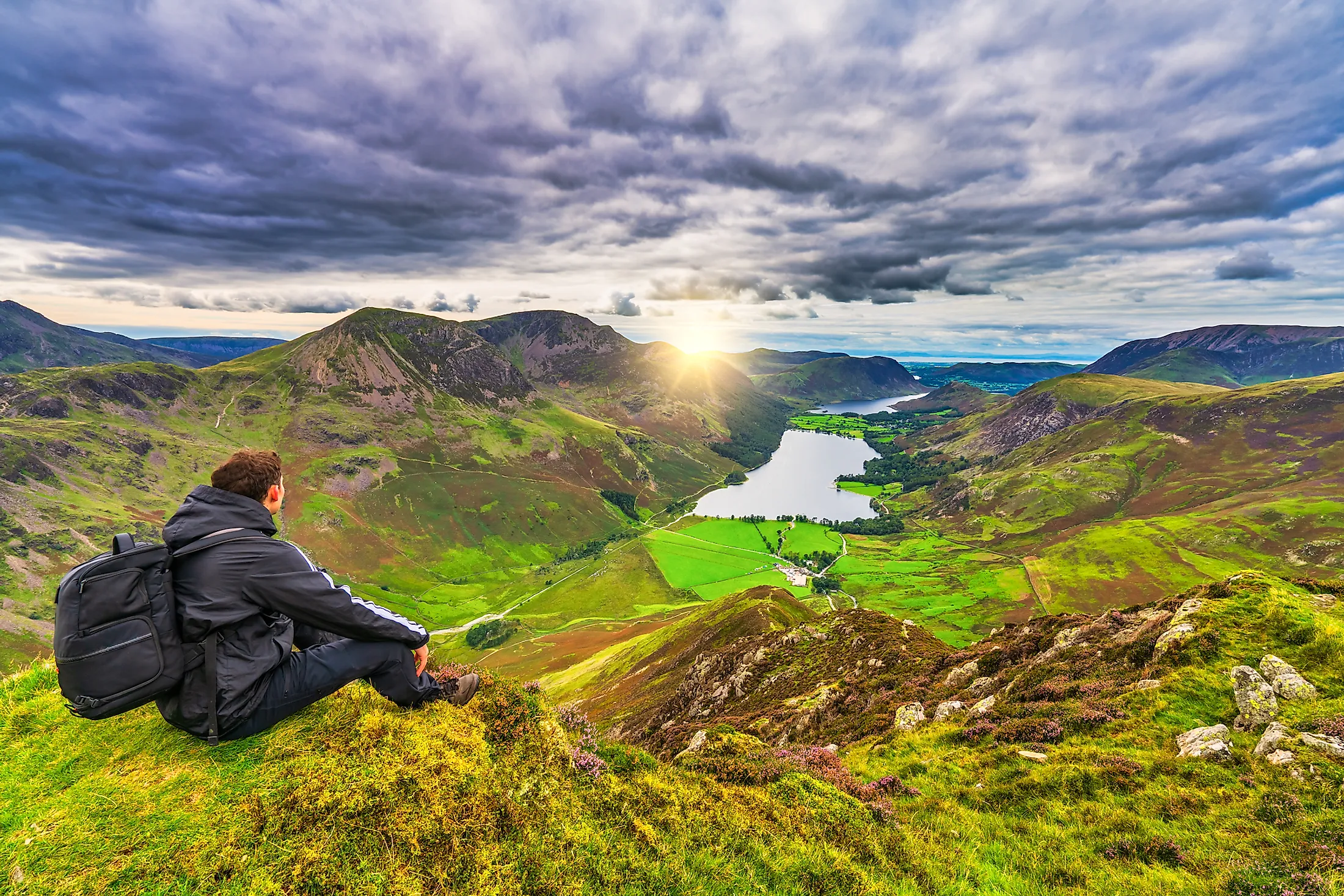
Lake District, England
North West England, England’s third-most populated region, is known for vibrant sporting activities, culture, history, and spectacular natural sceneries. The Lake District, a roughly circular area in Cumbria County, is one of the region's most popular tourist destinations, given its outstanding natural beauty and cultural significance. This mountainous region occupies parts of the historic counties of Lancashire, Cumberland, and Westmorland. It is known for its mountains, lakes, and forests and is associated with poets and writers like William Wordsworth, John Ruskin, and Beatrix Potter. The Lake District National Park, designated a UNESCO World Heritage Site in 2017, contains all areas in England higher than 914 meters and is the UK’s most visited place.
Location
Administratively, the Lake District is located within the county of Cumbria in North-Western England. Cumbria is England’s most northwesterly county located north of Lancashire, west of North East England, and south of Scotland, and has a coastline along the Irish Sea. The Lake District National Park occupies the county’s central part but does not include towns like Penrith, Kandal, and the Lakeland Peninsula. It covers parts of the three historic Lake Counties, including Westmorland on the east, Lancashire on the southwest, and Cumberland on the north and west. Major towns in the Lake District include Keswick, Bowness-on-Windermere, Hawkshead, and Grasmere.
Geography Of The Lake District
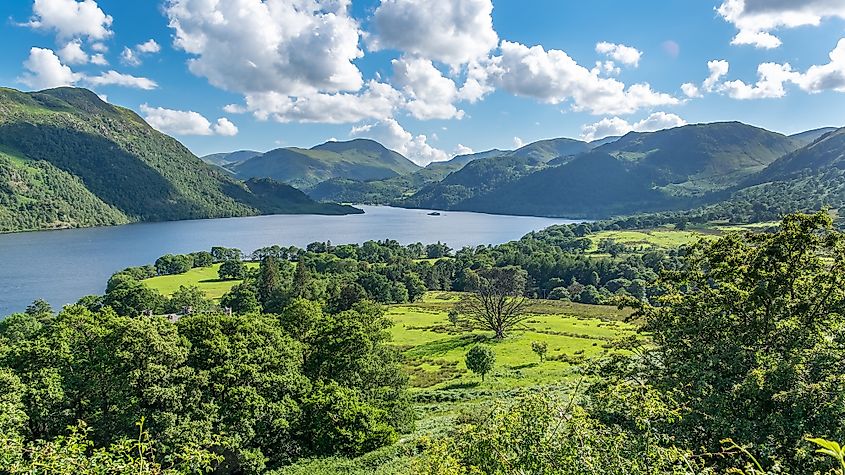
The Lake District is a roughly circular region dissected by deep valleys and fells. The region occupies a much larger area than the National Park, which is 2,362 square kilometers large. The park is 64 kilometers long from north to south and 51 kilometers wide from east to west but does not include the Lake District Peninsula on the southwest. The Lake District contains the UK’s principal lakes, highest mountains, and major valleys. Most valleys, shaped over the last two million years by repeated glaciation, are U-shaped and contain sizeable lakes in the bedrock hollows. The mountains contain tarns or smaller proglacial lakes at higher elevations. The abundant valley lakes and tarns are what earned the region the name “Lake District.”
Valleys
The Lake District has 13 different valleys, with some of these valleys containing more than one lake. Borrowdale and Bassenthwaite is the largest of the Lakeland valleys and contains the Bassenthwaite and Derwent Water Lakes. It runs from Esk Hause and Rossett Pike to Caldbeck Fells. The Windermere Valley, stretching southwards from the region’s central mountain core to the Irish Sea, contains England’s largest and longest natural lake. Other valleys include Buttermere, Coniston, Duddon, Eskdale, Ennerdale, Haweswater, Langdale, Thirlmere, Ullswater, and Wasdale.
Lakes
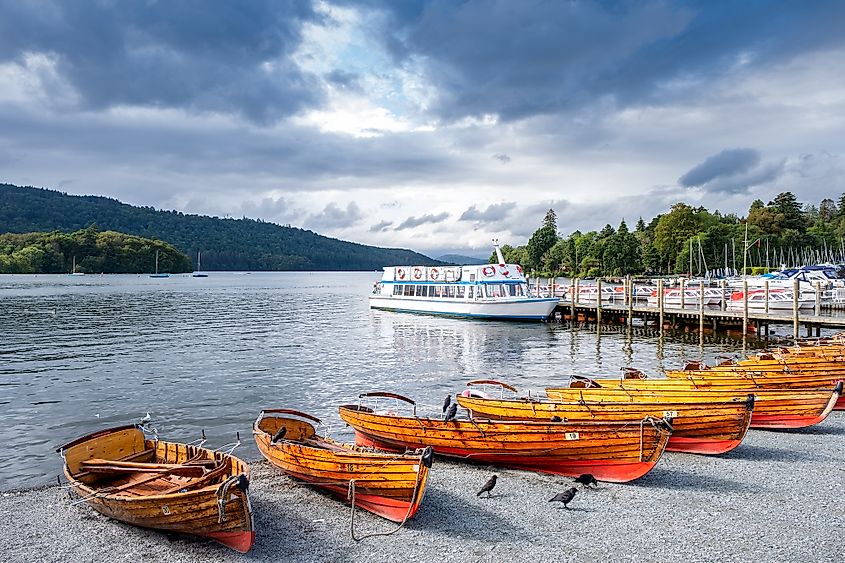
The Lake District has 16 major lakes and another 76 smaller water bodies considered as lakes. However, only one water body is referred to by the name “lake.” The others are either meres or waters. Bassenthwaite Lake is the only designated lake in the Lake District and the region’s 4th largest water body. It is 6.4 kilometers long, 1 kilometer wide, and 21 meters deep, and covers approximately 5.3 square kilometers. With a surface area of 14.8 square kilometers, Windermere is England’s largest natural lake. The ribbon lake is 18 kilometers long, 1.5 kilometers wide, and 67 meters deep. It is also Lakeland’s largest lake by volume. Other major lakes include Ullswater, Darwent Water, Coniston, Haweswater, Thirlmere, and Ennerdale Water.
Mountains (or fells)
There are over 200 mountains (fells) and hills in the Lake District, with the mountains divided into eight groups (massifs) depending on their location within the region. About 106 mountains and hills have an elevation of at least 660 meters above sea level. At 978 meters, Scafell Pike is Lakeland and England’s tallest mountain, followed by Scafell at 964 meters. The two mountains are part of the Southern Fells. Helvellyn is the highest point in the Eastern Fells and Lake District’s third-highest mountain at 950 meters. Other mountains rising above 900 meters are Skiddaw (931 meters), Great End (910 m), and Bowfell (902 m). The eight mountain groups are Northern, Northwestern, Western, Central, Eastern, Far Eastern, Southern, and Southeastern Fells.
Climate
The Lake District is England’s wettest area due to its topography and location on the northwestern coast, with annual precipitation averaging over 2,000 mm. However, rainfall varies with location. Areas like Seathwaite and Sprinkling Tarn receive an average of more than 3,000 mm, while Keswick receives about 1,470 mm annually. The region’s wettest period runs from October to January, while March to June is the driest. The maritime climate prevailing across Lakeland means temperature variation is moderate throughout the year. Mean annual temperature ranges between 3 and 15 degrees Celsius.
Wildlife
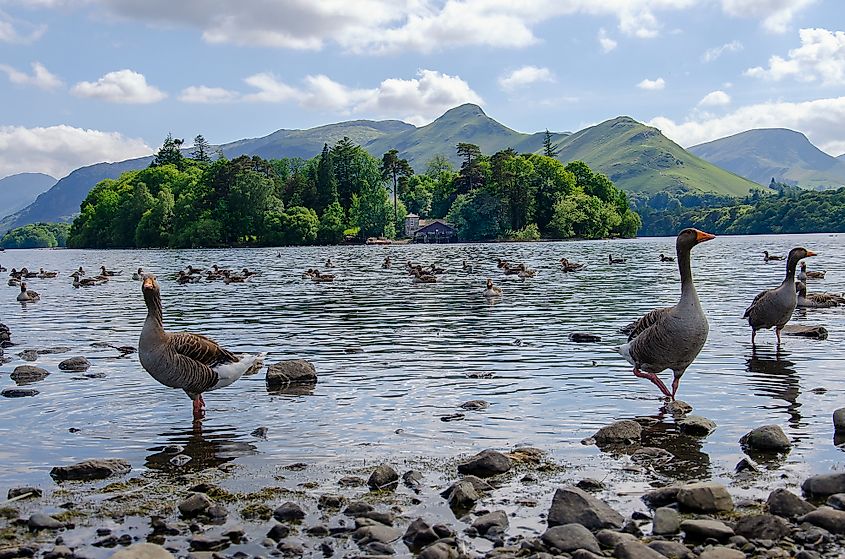
The Lake District hosts a variety of animals in its many lakes, mountains, and forest. Woodland covers about 12% of the National Park area and provides habitat for several wildlife species, including the UK’s largest population of Eurasian tree squirrels, commonly found in forest areas. The region is also a major sanctuary for a range of bird species, with a reserve maintained at Haweswater by the Royal Society for Protection of Birds (RSPB). Birds spotted in the area include golden eagles (only a pair of male and female), ospreys, red kites, peregrine, dipper, common raven, and buzzard.
Human Settlements
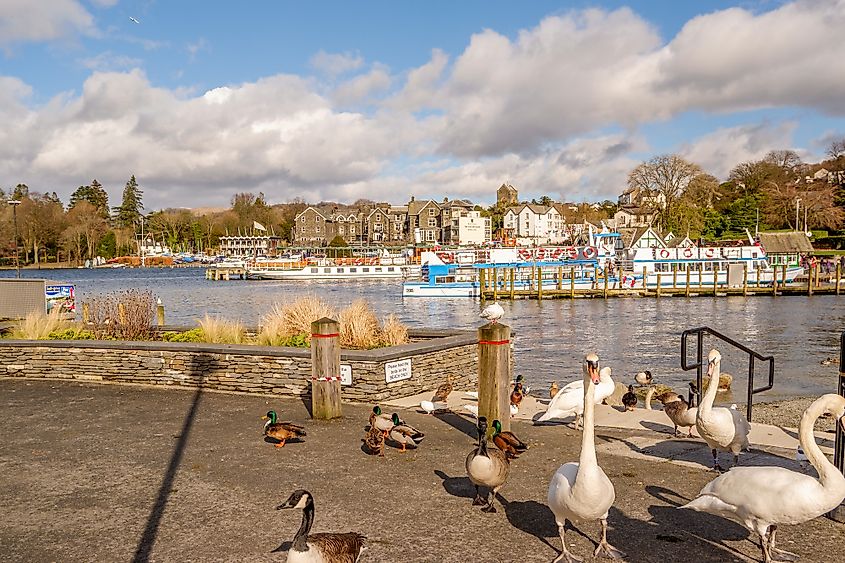
Approximately 40,500 people live within the boundaries of the Lake District National Park. It is one of the densely populated places in North West England, with 18 people per square kilometer. However, there are a few large settlements in Lakeland, with Keswick, Bowness-on-Windermere, Ambleside, and Windermere as the largest settlements. Windermere is the largest town in the area, with about 8,400 people. Besides residential homes, there are also holiday homes and resort areas that host visitors regularly.
Economic Significance Of The Lake District
Although Lakeland supports different economic sectors, tourism is the leading income source for the region’s economy. Tourists travel the Lake District National Park for pleasure and education, with the park receiving over 15 million visitors annually. Most tourists visiting the park come from larger UK settlements, Japan, China, the US, Germany, and Spain. In 2018, about 19.4 million people visited the Lake District and spent £1.48 million. Besides sightseeing and cycling, cultural tourism is also an important part of the tourism industry. The park has a rich history and provides theatre performances in venues like Theatre by the Lake.
Agriculture and forestry also thrive in the Lake District region. Sheep farming is a popular activity throughout Lakeland because of its benefit to the economy and landscape preservation. Forestry is practiced mainly around Ennerdale, Whinelatter Pass, and Grizedale, where conifer plantations were established. The abundant rocks in the Lake District have supported quarrying and mining for centuries. Besides rocks, minerals such as lead, copper, slate, graphite, and baryte have also been mined in the area.

